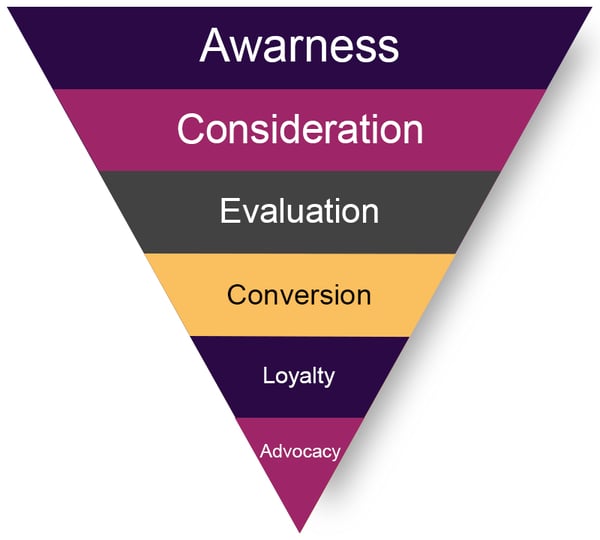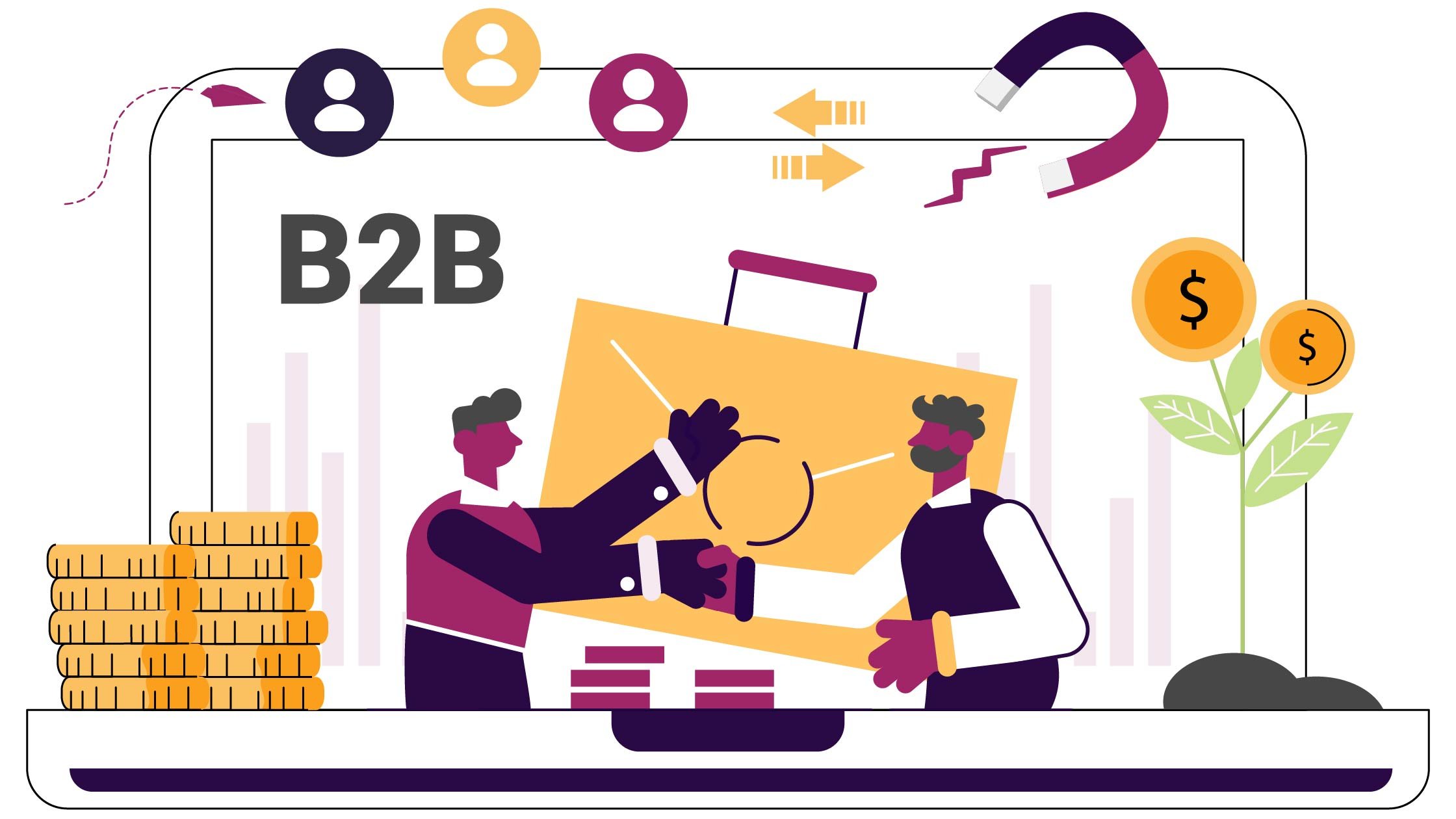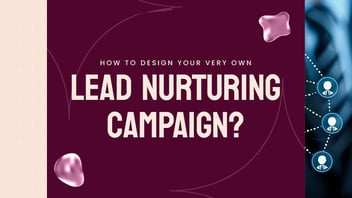
A Comprehensive Guide for B2B Sales Lead Nurturing
Hi there! Are you looking to improve your B2B sales lead nurturing strategy? It's great to see that you're taking this important step to grow your business. Lead nurturing is all about building relationships with potential customers.
By establishing a strong and personalized approach, you can increase the chances of converting leads into paying customers. In this article, we'll dive into the best practices for a successful B2B sales lead nurturing strategy, so you can make the most out of your sales efforts and grow your business.
On that note, here are the top 6 steps you can take in nurturing your sales leads:
- Define your target audience
- Establish your lead nurturing goals
- Create a lead-nurturing funnel
- Choose the right channel
- Automate your lead nurturing process
- Measure and nurture your lead nurturing program
Define Your Target Audience
Defining your target audience involves understanding your ideal customer's needs and pain points and how your product or service can help solve their problems. This information will allow you to create a lead nurturing approach tailored to their specific needs and increases the chances of converting them into customers.
To define your target audience, consider their:
- Job title
- Company size
- Industry
- Buying behavior
- Challenges they face at work
By taking the time to get to know your target audience, you'll be able to create a lead nurturing strategy. In fact, it connects with them on a deeper level, leading to more conversions and a more successful sales process.
Establish Your Lead Nurturing Goals
The second step is establishing your lead nurturing goals.
For B2B sales, lead nurturing is all about building relationships with potential customers and guiding them through the buying journey. So, your goals should reflect this.
Whatever your desired outcome may be, it's important to define it clearly so that you can measure your success and adjust your strategy accordingly. Remember, lead nurturing is a long-term process, so make sure your goals are realistic and aligned with your overall business objectives.
Also, it's important to make SMART goals which means your goals should be specific, measurable, achievable, relevant and time-bound.
Specific goals are focused and clearly defined, while measurable goals can be tracked and evaluated. Achievable goals are realistic and attainable, while relevant goals align with your overall business objectives. Finally, time-bound goals have a clear deadline for completion.
By setting SMART goals, you can make sure that your lead nurturing program is effective and efficient.
Create a Lead Nurturing Funnel
Moving forward, one of the best ways to nurture your sales leads is to create a lead-nurturing funnel. There are 6 stages in creating a lead nurturing funnel and those are:
 Awareness Stage
Awareness Stage
In the awareness stage, the most important goal is to introduce the company and its offerings to potential leads. This is also the perfect opportunity to share content that educates and informs them about the industry and the problems they face.
The idea is to build familiarity with the brand and establish trust with the audience on the topic. This stage is all about setting the foundation for a strong relationship between the brand and the potential customer.
Consideration Stage
Moving down the funnel, the next stage is consideration.
In the consideration stage, you want to continue building on the relationship you have established with potential leads. This is the perfect time to showcase your company's unique value proposition and highlight how you can solve their problems.
By providing case studies, testimonials, and product demos, you can offer concrete evidence of your abilities and demonstrate how you have helped others in the same situation. The goal here is to persuade leads that the company is the right choice for them.
Evaluation Stage
The next step down the funnel is the Evaluation stage.
In the evaluation stage, potential leads are getting closer to making a purchasing decision. This is the perfect opportunity to provide content that highlights the company's differentiators and benefits. By showcasing what sets you apart from the competition, you can demonstrate your superiority.
It's also important to address any objections they may have and provide a comparison with competitors. By doing so, you can alleviate any concerns they may have and provide the information they need to make an informed decision.
Conversion Stage
Another stage you must pay attention to in the funnel is the conversion stage.
In the conversion stage, it's time to seal the deal and turn potential leads into customers. To do so, you need to create content that emphasizes the urgency and benefits of making a purchase.
By showcasing the value that your offering provides and highlighting the urgency of the situation, you can encourage potential customers to take action. Additionally, offering special deals and discounts can create a sense of urgency and incentivize leads to make a purchase.
Loyalty Stage
The second to last stage in the funnel is the Loyalty Stage.
In the loyalty stage, the goal is to foster customer relationships and encourage repeat business. To do so, you need to provide content that adds value and keeps your brand top-of-mind.
You can also provide upsell and cross-sell opportunities to encourage customers to purchase additional products or services. The aim of this stage is to retain customers and maximize their lifetime value.
Advocacy Stage
And last but not least, the last stage in the funnel is the advocacy stage.
In the advocacy stage, the goal is to turn you happy customers into brand advocates and generate new leads through word-of-mouth marketing. To do so, you need to provide content that encourages customer referrals and reviews.
This might include resources that help customers share their positive experience with your brand or provide incentives for referrals and positive reviews. The aim of this stage is to leverage the power of your
satisfied customers to attract new leads and grow our business.
Choose the Right Channels
To start, it's important to understand the channels your target audience uses. This might include email, social media, events, or other channels. In fact, you can ensure that your content is reaching them where they are most likely to engage with it.
For example, email might be an effective channel for reaching decision-makers at a specific company. Unlike, social media which might prove to be a better way to reach a broader audience.
It's all about being strategic and thoughtful in how you engage with your audience and ensuring that you're providing value in the right places.
Automate Your Lead Nurturing Process
Another thing to consider is that you can automate your lead nurturing process.
Automating your lead nurturing process is a great way to streamline your efforts and ensure that your leads are receiving the right content at the right time. One way to do this is by using marketing automation tools.
These tools allow you to automate various aspects of the lead nurturing process, such as sending follow-up emails, triggering targeted campaigns based on user behavior, and more.
For example, setting up trigger-based email campaigns can help ensure that your leads receive timely, relevant content that speaks directly to their needs and interests.
This can lead to increased engagement and a higher likelihood of converting leads into customers. It's all about finding the right tools and processes to support your lead nurturing efforts.
Measure and Optimize Your Lead Nurturing Process
The last thing you want to do is measure and optimize your lead nurturing process.
One way to do this is by tracking key metrics such as open rates, click-through rates, conversion rates, and more. Once you've identified areas for improvement, you can analyze the data to determine what changes might be necessary to optimize your lead nurturing program.
For example, if you notice that your email open rates are low, you might experiment with different subject lines or send times to see if you can increase engagement.
And, of course, it's important to continuously test and optimize your lead nurturing program to achieve better results. This might involve making incremental changes over time, A/B testing different approaches.
To Finish Off
In conclusion, nurturing sales leads is a complex process that requires a strategic and consistent effort to be effective. From the awareness stage to the advocacy stage, there are multiple steps involved in guiding leads through the sales funnel and ultimately converting them into loyal customers.
It's important to understand your target audience, choose the right channels, and automate your lead nurturing process where possible. And, of course, measuring and optimizing your lead nurturing program is critical for achieving better results over time.
The key takeaway is that lead nurturing requires continuous effort, and there's always room for improvement.




